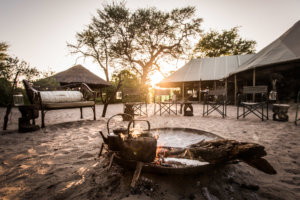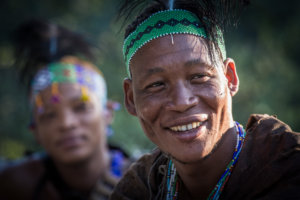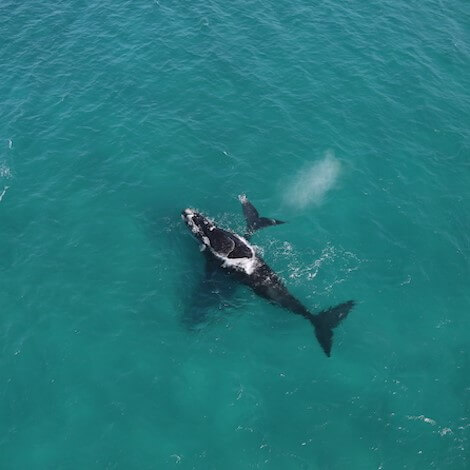Active
Popular
Meet Our Characters: Hennie Rawlinson
 Scott Ramsay
Scott Ramsay
 July 31, 2020
July 31, 2020
In the north of Africa, there was George Steinmetz. In the south, there was Hennie Rawlinson. Both were in love with the wild areas of the continent, and both were pilots obsessed with showing people Africa’s immense landscapes from the air.
Steinmetz is the legendary National Geographic photographer who quit Stanford University to backpack alone around Africa in the 1970s. Along the way, he realised Africa was even more dramatic when photographed from the air.
So he became a motorized paraglider pilot, and flew himself over some of the remotest regions, including the deserts of Chad, Sudan and Libya. His otherworldly photographs have been seen by millions of people around the planet.
Around the same time as Steinmetz launched his paraglider over the Sahara, Rawlinson began flying his Cessna 206 over Botswana and Namibia.

For three decades, Hennie flew himself – and guests – over iconic areas like the Namib desert, the Kalahari, the Okavango and the Marienfluss. Few people know the land – and skies – above these dramatic earthscapes as well as Hennie.
When Steinmetz turned his attention to the south of Africa, he came to Namibia in 2004, and headed straight for the aptly-named Skeleton Coast.
But the notoriously strong winds, thick fog and sand storms on the desert coastline proved too treacherous for even the intrepid Steinmetz and his paraglider. So he asked around for an experienced pilot who could take him up in a small plane.
Hennie Rawlinson’s name came out top of his list. And so they teamed up, and for three months, Hennie and George flew hundreds of hours in Hennie’s small Cessna above Namibia and Botswana.
They criss-crossed the entire region, but most memorable – or haunting – was one particular flight over the Skeleton Coast.

Meno a Kwena – Makgadikgadi – Botswana
“George almost killed me up there,” Hennie smiles, as we sit in the more benign locale of a comfy couch at Meno a Kwena, watching a group of bull elephants drink lazily from the Boteti River below us.
“The wind was pumping, and a sand storm came in suddenly. It was so thick I could hardly see the ground. And George kept asking me to go lower and lower to get his shots. That was a close call.”
George got his shots, and Hennie eventually landed the plane safely, despite howling wind and almost zero visibility.
Despite the near-death experience, or perhaps because of it, they remained close friends, and the National Geographic photographer has visited Hennie in Botswana several times since.
Hennie continued to fly for another ten years in his Cessna, dodging thunderstorms whenever possible, but eventually he hung up his wings, and decided that – for now – terra firma is the place for him.
And what spectacular terra firma it is. Meno a Kwena is a tented safari camp perched 20 metres above the low cliffs of the Boteti River, on the north-western edge of the 4 900 square kilometer Makgadikgadi Pans National Park.

Meno a Kwena – Makgadikgadi – Botswana
The Kalahari woodland stretches away to the horizon. The river is largely dry at this time of year, but big pools of water remain from last year’s flood.
Below us the elephants are slurping away, sucking up trunkfuls of water.
“We got the best view in Botswana, although that’s not very hard in such a flat country where our altitude range across the whole country is from 750 to 1 100 metres,” Hennie chuckles.
“You really don’t need to go on a game drive here, because you can sit here and just watch the animals come to you.”
If Steinmetz knows a thing or two about photography, Hennie knows plenty about safaris in Botswana.
Before he became a pilot, Hennie arrived in 1984 in Botswana from South Africa. He worked for Afro Venture Safaris as a guide in an industry that was still finding its feet. As one of the first photographic guides in the country, he saw the Delta the way very few see it today.
“These days there’s so much luxury in the safari industry,” Hennie tells me. “Back then, it was dome tents and bedrolls. It was real adventurous stuff, and helluva exciting. As guides, we had the whole of the Delta to ourselves, to explore and to show guests.”

Meno a Kwena – Makgadikgadi – Botswana
In 1999, Hennie was awarded the concession to build and own Xigera Camp, which became one of the flagship destinations in the Okavango. A few years later he sold it to Wilderness Safaris.
For more than three decades, Hennie has taken hundreds of guests into most of Botswana and Namibia’s wildest places, but for him, Meno was always one of his favourite spots.
“We used to camp here, back when it was just a camping site in the 80s. I always thought it would make a superb spot for a lodge. In 2015, it came up for sale, and I bought it along with Dave van Smeerdijk.”
Meno a Kwena means “Teeth of the Crocodile”. Long before it was a safari camp, crocodile hunters – including the legendary Jack Bousfield – camped at the site in the 1940s to 1960s.
While many of Botswana’s lodges are increasingly catering for guests who expect luxury accommodation, Meno has purposefully retained its down-to-earth atmosphere.
“Meno is very comfortable, but it’s still rustic, it’s authentic, and we love that. Everything else is going fancy with crazy high prices, and most camps are too manicured. Meno will stay traditional because some people still want that, including me.”

Meno a Kwena – Makgadikgadi – Botswana
Meno is particulary well-known for being the best place to watch the arrival of the zebra migration from April to August. About 70 000 zebras leave the nutritious grasslands of the Makgadikgadi Pans in the east and make their way west to the Boteti River, one of the few sources of water in the semi-arid region.
“There can be thousands of zebras crammed onto the banks of this river,” Hennie explains. “And Meno is one of the best places to see them.”
As we chat, more elephants come down to drink in front of us, and for Hennie, their presence is indicative of Botswana’s success in conservation.
“There are definintely more elephants around,” he explains. “When I was a pilot in the late 80s and early 90s, I never saw ellies in the Delta.”
“In the early 1990s, they started coming into Botswana, probably from Angola. Because of the civil war there, they felt safer here perhaps.”
With more elephants in the Delta, some bulls started wandering down to the Boteti River, south-east of the Okavango.
“If you speak to elders around this area,” Hennie says, “there were no ellies near the Boteti until around 2000. Then the river had a huge flood in 2008, and since then we’ve seen more and more of them.”

Meno a Kwena – Makgadikgadi – Botswana
While there are now more elephants and other wild animals near the Boteti, there are also more people and cattle.
“Conflict is inevitable. Elephants can destroy an entire cropfield in one night, and cattle make easy prey for lions. In retaliation, lions get poisoned and shot.”
Hennie knows that Meno a Kwena has a critically important role in mitigating this conflict, even if it will never go away entirely.
“We can’t expect people to live among large, potentially dangerous animals without helping them, without giving them benefits.”
Meno is one of the biggest funders of Elephants Alive, a team of researchers and community representatives who install solar-powered electric fences to protect crop fields and predator-proof kraals for livestock.

Meno a Kwena – Makgadikgadi – Botswana
The research team also travel from village to village, educating kids and adults alike about how to react safely to the presence of elephants and lions.
And Hennie knows that local people must benefit financially from wild animals. The lodge is the sole employer for nearby Moreomaoto Village.
“There are 28 local people from Moreomaoto Village working at Meno, out of a total of 33 Batswana staff” Hennie says, “and each of them supports up to ten people. Tourism revenue is critical, because it proves that wildlife can put money in the back pockets of local people.”
Meno also makes a significant contribution to Botswana’s Bushmen, the most ancient, continuous human culture on Earth. Just a few hundred remain, most of them on the western side of the country near the border of Namibia.
In agreement with the Ju/’hoansi community, Meno pays for a family to move to an area near Meno for three months at a time. They are official guides, and paid to take guests on walks, so clients can learn about their culture, their survival skills and their way of life.

Meno a Kwena – Makgadikgadi – Botswana
“It’s a fascinating insight into their world. The Bushmen are rewarded for their knowledge, and rightly so. And their culture is kept alive,” Hennie says. “They want the rest of the world to know about their way of life.”
As a lodge, Meno strives not only to offer a great safari experience to their guests, but to make a tangible difference to the lives of Botswana’s diverse people and wild animals in the area.
“There are challenges for sure,” says Hennie, “but it’s exciting too, because there are solutions, and we’re making them happen. It will take time, but we’re on the right track.”
Special Offers
Our special offers are designed to help you experience everything southern Africa has to offer whilst also saving some all-important pennies. Whether you’re about to embark on a once-in-a-lifetime solo trip, or are celebrating a special occasion, have a peek at our offers and see what could be in store for you.
























